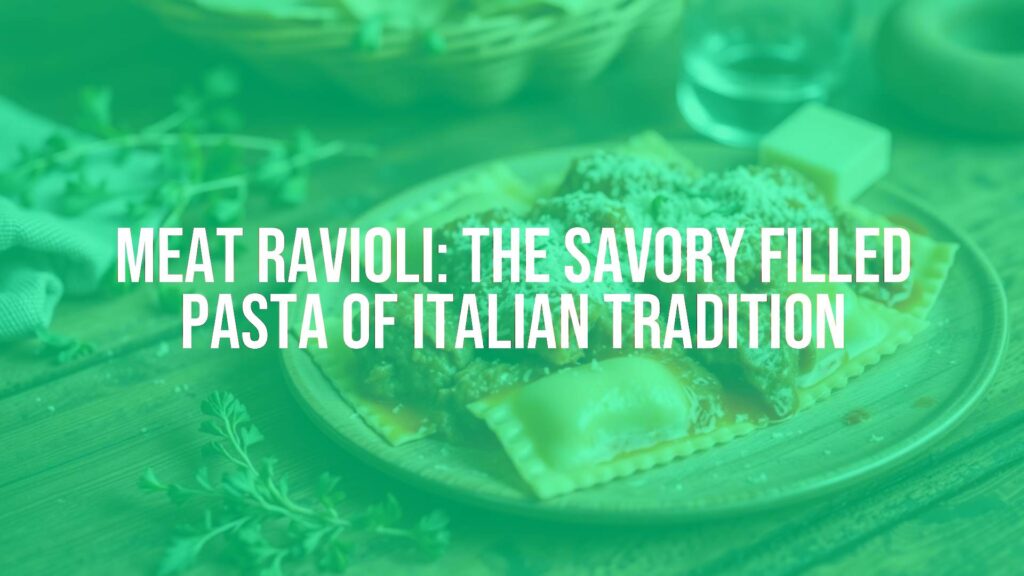Discovering Meat Ravioli: A Staple of Italian Cuisine
Meat ravioli stands as a beloved symbol of Italian comfort food, featuring delicate pockets of pasta encasing a savory meat filling. These little parcels are celebrated for their satisfying flavor and versatility, often served in both casual family kitchens and refined dining establishments across Italy and beyond.
Defining Characteristics of Meat Ravioli
A classic meat ravioli consists of thin sheets of egg pasta dough, expertly rolled and cut before being filled with a seasoned mixture of ground or minced meat. Typically, the filling is robust but harmonious, often combining beef, pork, or veal with aromatic ingredients like onions, garlic, Parmesan cheese, herbs, and a touch of nutmeg. The final texture should balance the tender bite of the cooked pasta with a juicy, flavorful center.
Historical Roots and Regional Relevance
The origins of ravioli can be traced back as far as the Middle Ages in Italy, where stuffed pasta dishes began appearing in both noble and rural cuisines. Meat ravioli quickly established itself as a favorite in northern regions such as Emilia-Romagna, Lombardy, and Piedmont. Each region developed its own variations, reflecting local ingredients and culinary customs. Over time, meat ravioli has become synonymous with festive occasions, especially during holidays and Sunday gatherings.
Key Ingredients and Preparation Insights
At the heart of this dish are a few essential elements:
- Pasta dough: Traditionally made with high-quality durum wheat semolina and fresh eggs, kneaded until elastic and then rolled thinly.
- Meat filling: Classic recipes use a blend of ground beef and pork, though veal or even game meats may be featured in some regions. The meat is usually cooked with sautéed aromatics and combined with grated cheese, herbs such as parsley, and sometimes breadcrumbs or spinach for texture.
- Seasonings: A carefully balanced combination of salt, pepper, nutmeg, and sometimes a small splash of wine or broth brings depth to the filling.
The filled pasta is cut into squares or rounds and sealed tightly before being boiled in salted water.
Variations and Adaptations
Though the archetype is a beef or pork filling, homemade and commercial meat ravioli come in numerous forms. Some regional styles might include mortadella, prosciutto, or variations with spinach and ricotta blended into the meat for added complexity. In Liguria, for example, ravioli di carne may include a hint of marjoram, while in Tuscany, shredded roast meats are sometimes preferred to minced fillings. Vegetarian variations use mushrooms, pumpkin, or cheese, while some contemporary adaptations substitute poultry or lamb.
Serving Suggestions and Pairings
Meat ravioli shines when matched with the right accompaniment. Traditional sauces range from a simple sage-infused butter or a hearty tomato ragù to a clear beef broth (brodo), especially in the north of Italy. Thanks to its rich profile, meat ravioli pairs exceptionally well with medium-bodied red wines such as Chianti, Barbera, or Sangiovese. Parmesan or Grana Padano cheese is often grated over the top for an extra finishing touch.
Cultural Significance and Occasions
Beyond their culinary appeal, meat ravioli hold a special place in Italian family traditions, frequently served during festive meals, Sunday lunches, and holiday celebrations. They represent not just a dish, but a ritual—often prepared with communal effort, bringing families together to roll, fill, and seal each raviolo by hand.
In Summary
Meat ravioli’s enduring popularity is rooted in its combination of comforting flavors, adaptable preparation, and deep cultural resonance. Whether gracing a holiday table or enjoyed as a weeknight treat, this stuffed pasta continues to exemplify the richness and diversity of Italian culinary heritage.

